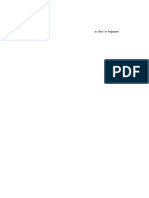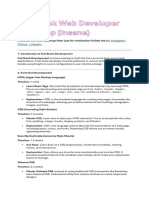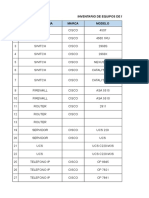0 ratings0% found this document useful (0 votes)
72 viewsPython Full Stack Developer ROADMap
The document outlines a comprehensive roadmap for becoming a Python Full Stack Developer, divided into nine steps over various timeframes. It covers learning Python basics, advanced concepts, frontend and backend development, databases, testing, DevOps, and project development. The roadmap emphasizes continuous learning and building a portfolio while encouraging practice and engagement with the developer community.
Uploaded by
s ramakrishnanCopyright
© © All Rights Reserved
We take content rights seriously. If you suspect this is your content, claim it here.
Available Formats
Download as DOCX, PDF, TXT or read online on Scribd
0 ratings0% found this document useful (0 votes)
72 viewsPython Full Stack Developer ROADMap
The document outlines a comprehensive roadmap for becoming a Python Full Stack Developer, divided into nine steps over various timeframes. It covers learning Python basics, advanced concepts, frontend and backend development, databases, testing, DevOps, and project development. The roadmap emphasizes continuous learning and building a portfolio while encouraging practice and engagement with the developer community.
Uploaded by
s ramakrishnanCopyright
© © All Rights Reserved
We take content rights seriously. If you suspect this is your content, claim it here.
Available Formats
Download as DOCX, PDF, TXT or read online on Scribd
You are on page 1/ 2
Python Full Stack Developer
Step 1: Learn the Basics of Python (1-3 months)
Start with basic syntax and data structures (lists, dictionaries, sets)
Understand control structures (if-else, for loops, while loops)
Familiarize yourself with object-oriented programming (OOP) concepts
Practice with online platforms like LeetCode, HackerRank, or CodeWars
Step 2: Learn Advanced Python Concepts (1-3 months)
Study advanced data structures (stacks, queues, graphs)
Learn about decorators, generators, and asynchronous programming
Understand web development frameworks like Flask or Django
Learn about databases (SQL and NoSQL) and ORM libraries like
SQLAlchemy
Step 3: Frontend Development (3-6 months)
Learn HTML, CSS, and JavaScript
Understand frontend frameworks like React, Angular, or Vue.js
Familiarize yourself with UI/UX design principles
Learn about state management libraries like Redux or MobX
Step 4: Backend Development (3-6 months)
Learn a Python web framework (Flask or Django)
Understand API design principles and RESTful architecture
Learn about authentication and authorization (OAuth, JWT)
Study database modeling and migration tools like Alembic
Step 5: Databases and Storage (1-3 months)
Learn about relational databases (MySQL, PostgreSQL)
Understand NoSQL databases (MongoDB, Cassandra)
Familiarize yourself with cloud storage services (AWS S3, Google Cloud
Storage)
Learn about caching mechanisms (Redis, Memcached)
Step 6: Testing and Deployment (1-3 months)
Learn about unit testing and integration testing
Understand testing frameworks like Pytest or Unittest
Familiarize yourself with deployment strategies (containerization,
serverless)
Learn about CI/CD pipelines and tools like Jenkins or GitLab CI/CD
Step 7: DevOps and Security (1-3 months)
Learn about containerization using Docker
Understand Kubernetes and cluster management
Familiarize yourself with security best practices (OWASP)
Learn about monitoring and logging tools like Prometheus or ELK Stack
Step 8: Project Development and Portfolio Building (3-6 months)
Build personal projects or contribute to open-source projects
Develop a portfolio showcasing your skills and experience
Participate in coding challenges or hackathons
Network with other developers and join online communities
Step 9: Continuous Learning and Professional Development
Stay updated with industry trends and new technologies
Attend conferences, meetups, or webinars
Read books, articles, or blogs on development and technology
Pursue certifications or advanced degrees (optional)
This roadmap provides a general outline, and the timeframes are approximate.
Focus on building a strong foundation, and gradually move on to more advanced
topics. Remember to practice, build projects, and stay curious throughout your
journey!
You might also like
- 070-251 SM - 2007 - 01 Service Manual TDSH & GDSHNo ratings yet070-251 SM - 2007 - 01 Service Manual TDSH & GDSH12 pages
- how to be full stack developer .... using python option2No ratings yethow to be full stack developer .... using python option23 pages
- Here’s your ultra-detailed step-by-step roadmap for learning Backend Development, DevOps, and AI_ML after completing your CSE graduationNo ratings yetHere’s your ultra-detailed step-by-step roadmap for learning Backend Development, DevOps, and AI_ML after completing your CSE graduation9 pages
- how to be full stack developer .... using pythonNo ratings yethow to be full stack developer .... using python2 pages
- Becoming a full-stack developer with Python involves mastering both front-_20241230_120127_0000No ratings yetBecoming a full-stack developer with Python involves mastering both front-_20241230_120127_000023 pages
- Learning Python From Scratch To Building and DeployingNo ratings yetLearning Python From Scratch To Building and Deploying3 pages
- Python_Full_Stack_Development_PresentationNo ratings yetPython_Full_Stack_Development_Presentation10 pages
- Python Full Stack With Djando and PostgreSQLNo ratings yetPython Full Stack With Djando and PostgreSQL2 pages
- Full-Stack Developer RoadMap by Chidanand TripathiNo ratings yetFull-Stack Developer RoadMap by Chidanand Tripathi5 pages
- How to Become a Good Python with Flask developerNo ratings yetHow to Become a Good Python with Flask developer8 pages
- Redesigned_Python_Full_Stack_Development_PresentationNo ratings yetRedesigned_Python_Full_Stack_Development_Presentation10 pages
- Q VINr EXM7 D 1 CD 9 KMQ 6 Ev 1711551423No ratings yetQ VINr EXM7 D 1 CD 9 KMQ 6 Ev 17115514231 page
- How to Become Full Stack Developer QuicklyNo ratings yetHow to Become Full Stack Developer Quickly4 pages
- Python Developer Curriculum RecommendationsNo ratings yetPython Developer Curriculum Recommendations6 pages
- Here’s your ultra-detailed step-by-step roadmap for learning Backend Development, DevOps, and AI_ML after completing your CSE graduation-1No ratings yetHere’s your ultra-detailed step-by-step roadmap for learning Backend Development, DevOps, and AI_ML after completing your CSE graduation-12 pages
- The Oracle Universal Content Management Handbook: Build, administer, and manage Oracle Stellent UCM SolutionsFrom EverandThe Oracle Universal Content Management Handbook: Build, administer, and manage Oracle Stellent UCM Solutions5/5 (1)
- 11th Business Mathematics Statistics Monthly Test Question Paper 2022 2023 English Medium PDF DownloadNo ratings yet11th Business Mathematics Statistics Monthly Test Question Paper 2022 2023 English Medium PDF Download2 pages
- Law Test-1 Indian Contract Act (Unit 1,2,3)No ratings yetLaw Test-1 Indian Contract Act (Unit 1,2,3)2 pages
- Concept-and-Determinants-of-PersonalityNo ratings yetConcept-and-Determinants-of-Personality6 pages
- Audit Programme (Advantages & Disadvantages)No ratings yetAudit Programme (Advantages & Disadvantages)5 pages
- Preliminaries before the commencement of auditNo ratings yetPreliminaries before the commencement of audit4 pages
- RAILWAY SCHOOL CLASS 4 CHAPTER 2 9564030209No ratings yetRAILWAY SCHOOL CLASS 4 CHAPTER 2 95640302093 pages
- Introduction To Operation Management-DefinitionNo ratings yetIntroduction To Operation Management-Definition2 pages
- 211-02. Steering System Power Steering Removal and Installation (Power Steering Pump - 6.4L Dies 6100% (1)211-02. Steering System Power Steering Removal and Installation (Power Steering Pump - 6.4L Dies 63 pages
- MultiPlus System Example 5KW 24V 230V ACNo ratings yetMultiPlus System Example 5KW 24V 230V AC1 page
- GD-65T (TAC) : Continuous Duty Plunger PumpNo ratings yetGD-65T (TAC) : Continuous Duty Plunger Pump2 pages
- Engineer Resume and Ability Questionnaire2024 (Shah Hussein)No ratings yetEngineer Resume and Ability Questionnaire2024 (Shah Hussein)4 pages
- Vocabulary of Classroom Objects in English in PDFNo ratings yetVocabulary of Classroom Objects in English in PDF4 pages
- E-Commerce Websites Comparative AnalysisNo ratings yetE-Commerce Websites Comparative Analysis10 pages
- Eng CS 1-1773701-8 M8M12 Connector System 2201No ratings yetEng CS 1-1773701-8 M8M12 Connector System 220183 pages
- Chapter Five: Summary, Conclusion and RecommendationsNo ratings yetChapter Five: Summary, Conclusion and Recommendations2 pages
- Accenture Coding previous year questionsNo ratings yetAccenture Coding previous year questions21 pages
- Ewyt-B - (SL - Sr.ss - XL.XR - XS.) Bas Integration Guide Bacnet D-Eigoc00107-23 01 EnglishNo ratings yetEwyt-B - (SL - Sr.ss - XL.XR - XS.) Bas Integration Guide Bacnet D-Eigoc00107-23 01 English47 pages



















































































































